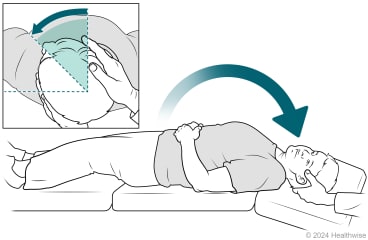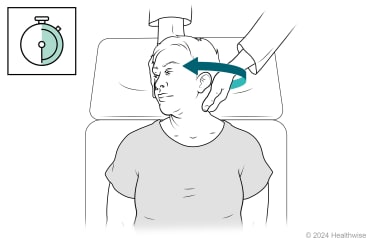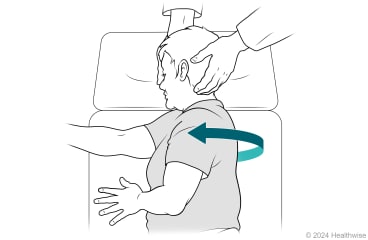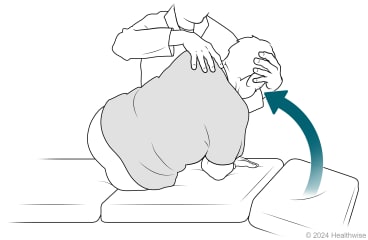Overview
The Epley maneuver is a series of movements your doctor may use to treat your vertigo. Here are the steps for the exercises. Your doctor or physical therapist will guide you through the movements.
A single 10- to 15-minute session may be all that's needed. Tiny calcium "stones" cause the vertigo.
When your head is moved into different positions, the stones move back to where they are supposed to be. This may cause your symptoms to stop.
How it is done
This maneuver is done with the assistance of a doctor or physical therapist. A single 10- to 15-minute session may be all that is needed. When your head is firmly moved into different positions, the tiny calcium "stones" that are causing vertigo should move back to where they are supposed to be and no longer cause symptoms.

You will sit on the doctor's exam table with your legs on the table in front of you. The doctor will turn your head so that it is halfway (45 degrees) between looking straight ahead and looking directly to the side that causes the worst vertigo. Without changing your head position, the doctor will help you to quickly lie down on your back. Your head will be lower than your shoulders. The doctor will hold you in this position for at least 20 seconds.

Then the doctor will turn your head to the other side. You don't need to lift your head. The doctor will hold you in this position for at least 20 seconds.

The doctor will hold your head in position and help you roll your body in the same direction that your head is facing. Your face will look toward the floor. You will be lying on the same side that causes the worst vertigo. (For example, if you are looking to your right, you will roll onto your right side.) The doctor will hold you in this position for at least another 20 seconds.

The doctor will then help you to sit back up. Your legs will hang off the table on the same side that you are facing. Your doctor may repeat the steps a few times.
Follow-up care is a key part of your treatment and safety. Be sure to make and go to all appointments, and contact your doctor if you are having problems. It's also a good idea to know your test results and keep a list of the medicines you take.
Current as of: October 27, 2024
Author: Ignite Healthwise, LLC Staff
Clinical Review Board
All Ignite Healthwise, LLC education is reviewed by a team that includes physicians, nurses, advanced practitioners, registered dieticians, and other healthcare professionals.

